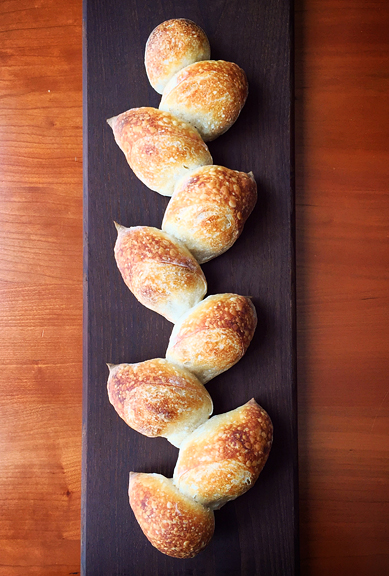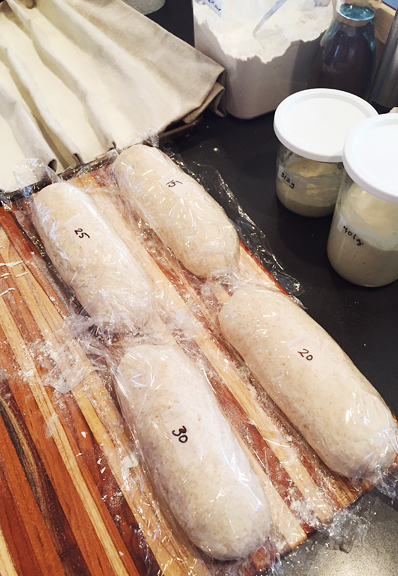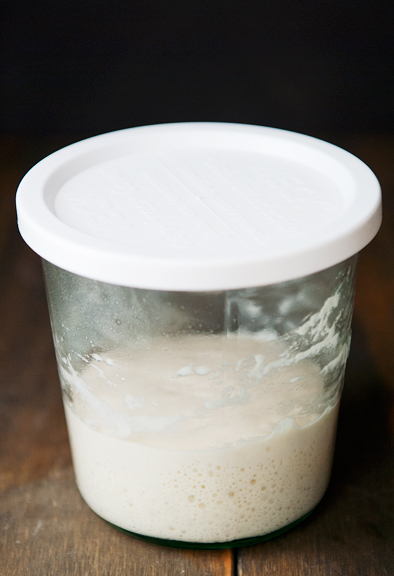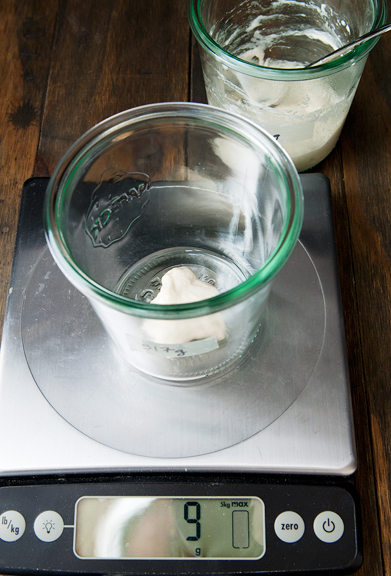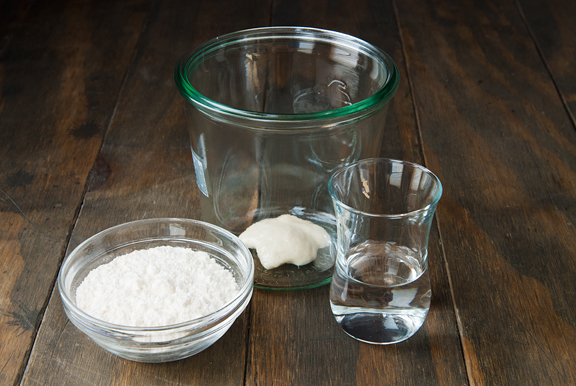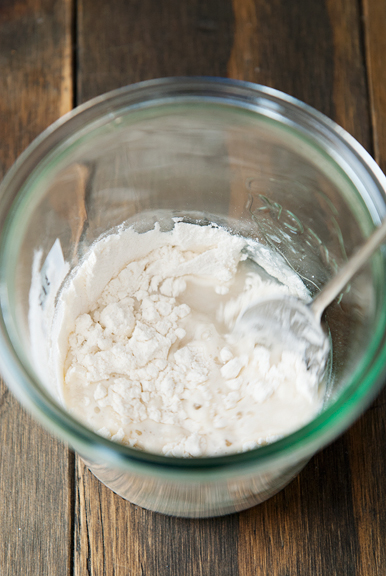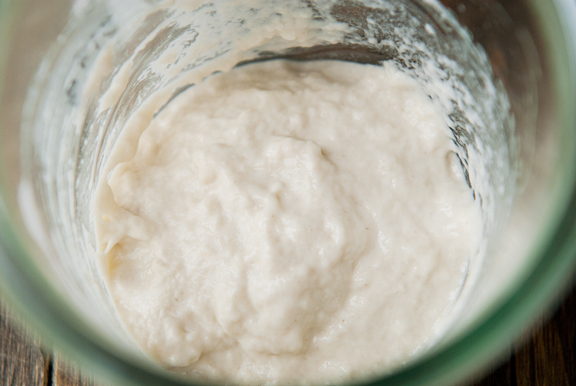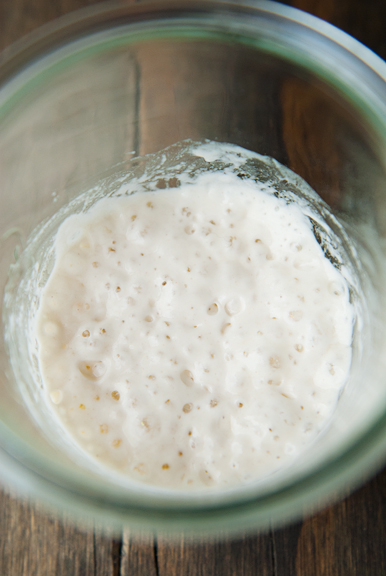 Recipe: sourdough bread
Recipe: sourdough bread
Last week felt like proper winter for once. We had two powder days, cold temperatures, and great skiing on the mountain and the Nordic trails. I had almost forgotten what a real ski season is like! A real ski season is like butter. Smooth, silky, fluffy, cold, snowy butter…
jeremy grabs some powder runs before a meeting

hello winter, nice of you to come by!

It was also the perfect time to be experimenting with bread baking and running a hot oven. Baking sourdough bread has been on my List of Stuff and Things for over a decade. My greatest impediment was my fear of the unknown. You mean you have to CARE for sourdough starter? As in, keep it alive?!? How many times do we put off doing something because we can’t seem to overcome the activation energy (mental or otherwise) required to get going? And how many times, after we finally get around to doing it, do we kick ourselves for not doing it sooner now that we know it wasn’t such a big deal after all? I do not possess enough hands to raise for all the times I psyched myself out of awesome things, but I am learning that sometimes we need to simply get out of our own way.
i baked some bread

Over the last couple of years I’ve admired my friend,
Dawn, as she cranked out artisan pizzas, breads, pastries, and a host of other goodies. She grew and milled her own wheat! Dawn is one of my real life girl crushes because she’s badass and wonderful and rescues abandoned pups in the mountains left for dead by jerks. So it made sense that I would ask her for some sourdough starter in the hopes that her awesomeness would accompany the starter into my kitchen. In the last two weeks, I’ve given starter and Dawn’s Starter Care Guide to two other friends. Bread is for sharing! Once I saw how straightforward it is to feed and maintain my starter (I named it Wheatley) without killing it, I went in search of a sourdough bread recipe. My absolute favorite sourdough comes from Tartine Bakery in San Francisco and the
recipe I used from The Kitchn is adapted from Tartine’s method, but for the home baker.
sourdough starter, water, water, flour, flour, salt

It blows my mind just a little (okay, a lot) that you can transform water, flour, and salt into a deep golden loaf of perfection. Whether you purchase, receive, or make your own sourdough starter, what you have in your jar is wild yeast that requires regular feeding. Feeding basically means stirring in equal weights of water and flour. [Note: While some may insist that I’ll have to pry their measuring cups from their cold dead hands, a kitchen scale eliminates the inaccuracies of volumetric measurements.] As the little yeasties digest the sugars in their food and produce energy by the process of fermentation, they create byproducts of carbon dioxide and ethanol. The carbon dioxide forms bubbles in your starter. That’s how you know it’s alive and active.
If you don’t feed your starter, it will eventually die. This was my biggest hangup with baking sourdough bread – was I going to kill my starter? Thankfully, you don’t have to babysit your starter daily if you don’t want to or are unable to. The lower temperature of the refrigerator slows the metabolism of the yeast such that a single feeding can sustain the organisms for a week or more. And if you are going to be away from your starter for longer than a few weeks, you can always make a backup. But a healthy and active starter should probably hang out on your kitchen counter at room temperature, receiving regular feedings for a few consecutive days, before making your bread. I typically feed my starter in the morning, and it is ready for use about 8 hours later.
The recipe I followed makes two 1-pound loaves of sourdough and calls for one tablespoon of starter. I halved the recipe and used a half tablespoon or 8 grams of starter. The starter gets mixed with flour and water and is left to feed overnight. This is the levain (leaven) – the stuff that makes your bread rise. As our municipal water is treated with chlorine, I use purified water for the levain (there is always some leftover from my kombucha-making) as I don’t want to kill my baby yeasts. Alternatively, I could let my tap water sit out for a day as chlorine is pretty volatile and will evaporate naturally.
weighing the water for the levain

mixing the levain

bubbly the next day

The levain should be bubbly and light and expanded the next day. I usually give it a sniff to make sure it’s a little sour smelling, a little alcoholy. Is it bad that I like sniffing sourdough starter? You can take a small spoonful of levain and drop it into water. If it floats, it’s ready to use. Stir the levain into the water until it is dissolved, then mix in the flour. You can use all-purpose flour or bread flour. I accidentally used all-purpose flour on my first attempt and then made sure to use bread flour on the second attempt. The bread flour dough was easier to work with, and I think the texture and flavor were better than the all-purpose flour loaf too. Also, if you have a Danish dough whisk languishing away in a drawer somewhere (like me), this is the perfect time to use it. It incorporates the flour so easily and quickly! The dough should look like a shaggy mess with no dry pockets of flour remaining.
Now let that shaggy mess rest for 30 minutes to 4 hours. This process, called autolyse, allows the flour to absorb the water and begins gluten development. I let mine rest for 4 hours (and went skate skiing on the local Nordic trails). And because I never know which factors of my kitchen (high altitude, cold, aridity, etc.) are going to impede my culinary endeavors, I cover the bowl with plastic wrap rather than a kitchen towel to prevent the dough from drying out, and I set the bowl atop the refrigerator where it is slightly warmer and out of Neva’s reach.
dissolve the levain in water

add the flour

mix it into a shaggy dough

**Jump for more butter**















